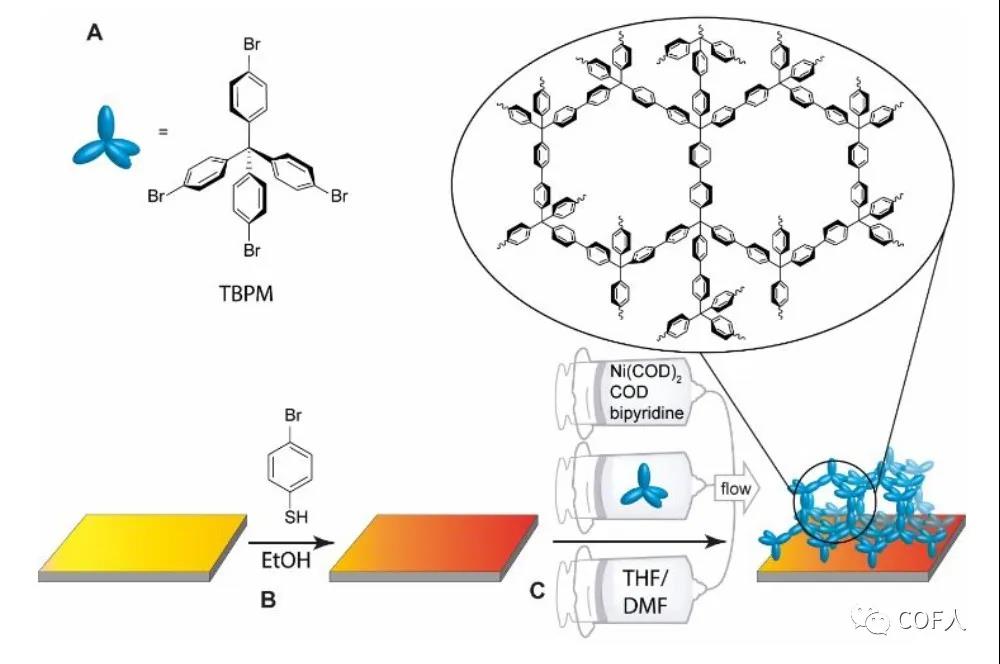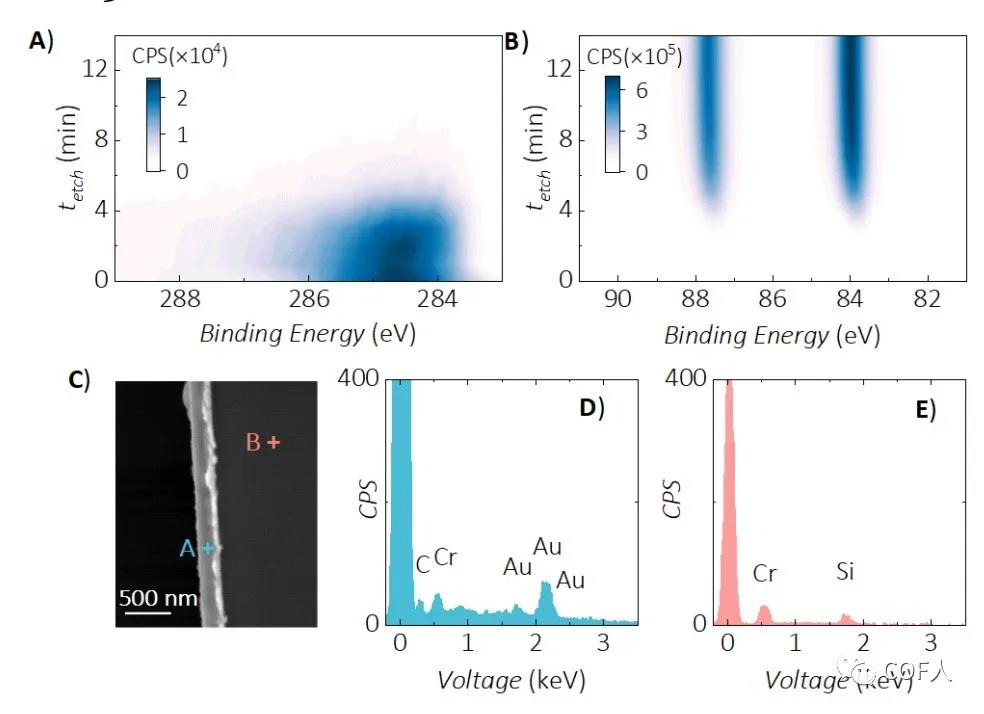
hotline:
17715390137
Tel/Wechat:
18101240246 (Technology)
0512-68565571
Email:mxenes@163.com (Sales Engineer)bkxc.bonnie@gmail.com
Scan the code to follow or search the official account on WeChat:
2D Materials Fronrier After paying attention,
click on the lower right corner to contact us,
Enter enterprise WeChat.
Professional Services Online

Tip: This article is a bit boring to understand. If you are studying, you can read it in detail. If you just browse, you only need to read the first two paragraphs.
Currently, manufacturing intrinsically porous materials with chemical and structural stability remains a challenge. Traditionally, dynamic chemistry hasbeen considered necessary to form a uniform porous organic framework, but dynamic bonds can limit the stability of these materials. Compared with the traditional porous frame, the full-carbon connected frame material isexpected to show higher stability. However, the reversibility of the carbon-carbon bond formation reaction is limited and it is difficult to achieve uniformity , which limits the extensive research on these materials. In particular, it is more challenging to synthesize a uniform film with a full carbon skeleton .
This work regulated by the kinetics of the reaction, the synthesized two cases (PAF-1 and BCMP-2) having a thickness of nanometer precision adjustable all-carbon even 3D porous membrane into contact aromatic framework. The method is (Figure 1): Firstly, the PAF reactive group is firstly placed on the substrate by the self-assembly surface connection method (the first step: the substrate is modified ), and then a low concentration PAF raw material liquid is continuously flowed through the substrate surface to introduce the raw material monomer (The second step: slow and uniform growth ), can realize the controllable smooth and continuous PAF film growth thickness . This method is more conducive to growing into a thin film rather than a lumpy powder. The author used a quartz crystal microbalance (QCM) to monitor the film growth in real time, and used a scanning electron microscope (SEM) cross-section imaging to correlate the QCM signal with the film thickness to achieve nanometer thickness control.

Fig. 1.Synthesis of PAF membrane.
[PAF membrane synthesis]
[1. Reaction kinetics] The key to the uniform frame material film is to control the polymerization process in space. However, because CC covalent bonds are irreversible, it is difficult to control them once the reaction is complete. Therefore, we believe that the formation of regular precursors in thereaction initiation stage is necessary to synthesize a smooth, uniform film. On the other hand, framework polymerization may also occur in solution, leading to the presence of aggregates and contamination of the film. In other words, the challenge of synthesizing a complete and uniform film is to limit the nucleation and growth of the powder in the homogeneous phase , while promoting the uniform, layer-by-layer heterogeneous growth of the film .
The reaction rate between two substances in the solution, whether monomers or oligomers, will follow the secondary kinetics of monomer concentration. In contrast, when the monomer is coupled to the surface, the concentration of one of the reactants (on the surface) is fixed, so quasi-first order kinetics can be expected to be observed. Therefore, the related rate equations for monomer-monomer and monomer-surface reactions are as follows:
This difference in reaction kinetics indicates that at high concentrations, the monomer reaction tends to form mainly oligomers , and at a certain critical size, the oligomers will precipitate from the solution to form a powder. Adverse. When the concentration is reduced, the bulk response (1) is reduced compared to the surface growth (2). Therefore, at a certain low concentration threshold, the surface film-forming reaction will dominate . This state is considered to be an ideal condition for synthesizing a uniform CC bonded framework film.
[2. Synthesis method] When a uniform film is prepared by a bottom-up method , adsorption between the substrate and the first frame film is necessary. Due to the directional diffusion of -SH on the gold surface, it indicates that a uniform self-assembled monolayer film (SAM) may be formed in gold, and if the -SH molecule is subsequently brominated (4-bromothiophenol) at the para position, allowing The monomer (TBPM) of PAF-1 undergoes Yamamoto coupling reaction with it. Finally, the fully thiol-functionalized SAM reacts with an appropriate amount of TBPM to form a single-layer PAF, which serves as a template for subsequent PAF film formation. In order to realize this idea, it is necessary to meet ( 1) the steady state concentration of the monomer, in this experiment, 1% of the synthetic PAF-1 concentration previously reported was used; (2) the continuous flow conditions were used to provide a continuous flow throughout the reaction Monomer, thereby limiting powder aggregation.For this purpose of the establishment of a three-based programmable syringe pump, a mixing unit and a mobile unit microbalance (the QCM) quartz flow movement of the reaction system .
Figure 2 shows an electron micrograph of a thin film synthesized using bulk or flow conditions. Under the conditions of bulk synthesis, the film is very rough (Figure 2a), and the film synthesized by the above method is shown in Figure 2b, resulting in a continuous and smooth film. 2c is the result of using bromine-free thiophenol as SAM, and the obtained film has obvious faults. 2d is a result of a 10-fold concentration of monomer, and it is found that the precipitate on the film is obvious. These experiments show that to form a uniform skeletal membrane, it is necessary to meet the conditions of surface connection , low concentration and flow simultaneously .

Fig. 2 TEM images of different synthesis conditions
[PAM film thickness control]
In order to monitor the formation of the frame film in real time, a quartz crystal microbalance QCM technology is used . The frequency shift is directly related to the film thickness, and the frequency shift slope is related to the reaction rate of the film surface. It is found that when the flow rate is reduced, the initial boundary layer thickness increases, and the diffusion rate of the solvated monomer into the PAF decreases, which will cause the growth rate to decrease, and the final result will cause the film to become thinner instead . Therefore, by controlling the entry rate of the monomer, a smooth porous three-dimensional PAF film with a controllable thickness can be prepared. Editor‘s Note: In the text, the author did not discuss in detail how the specific thickness of the film can change the experimental conditions. Since the jacs journal has not updated SI on the date of writing, the specific details are unknown.

Figure 3 Monitoring of film thickness
[Characterization of PAF film]
In order to characterize the chemical composition of the film formed on the surface of the gold substrate , the authors measured the XPS and SEM element distributions, as shown in Figure 4. The results are obvious, and it is proved that the synthesis is a uniform carbon-fed PAF membrane, which is not shown here. In addition, as an extension of this film-forming method, the author also synthesized another PAF film, BCMP-2, which proved that this method has universality .

Figure 4 Element characterization of PAF film
【in conclusion】
Based on the basic principles of chemical reaction kinetics, the author explores and implements a method for synthesizing a three-dimensional PAF continuous smooth film with a nanometer-level precise thickness and controllable thickness . It is believed that this method will have great guiding significance for the synthesis of various types of framework compounds such as COF and MOF! !! !!
Note: The level of the editor is limited, if there is any deficiency, please correct me, be grateful!
Original link: https://doi.org/10.1021/jacs.9b10884
Source of information: COF people

| Reminder: Beijing Beike New Material Technology Co., Ltd. supplies products only for scientific research, not for humans |
| All rights reserved © 2019 beijing beike new material Technology Co., Ltd 京ICP备16054715-2号 |